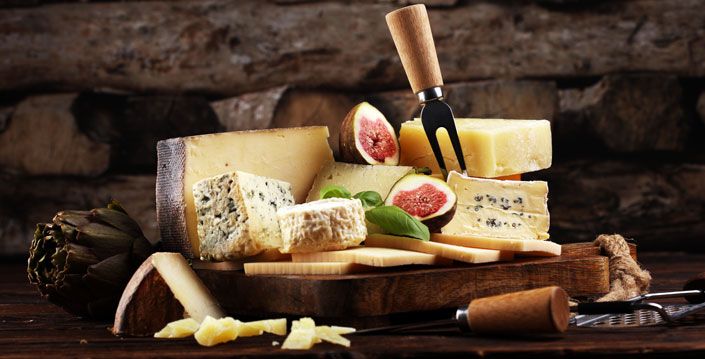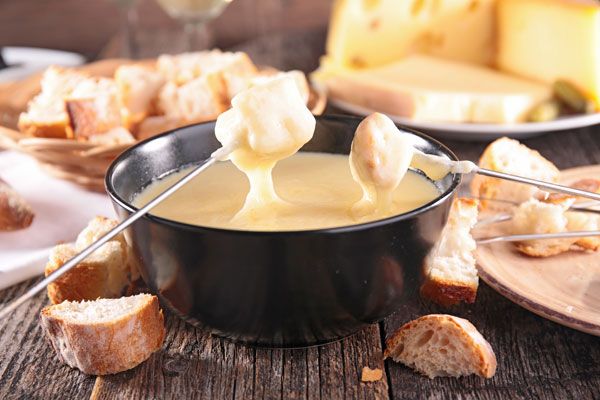Cheese can be considered one of the most versatile ingredients used in various cuisines. It features many dishes and comes in a wide range of flavors, colors, shapes, and textures. Cheese can also be served on its own or paired with other food items such as meats, fruit, pastries, and wines. Hence, there are several ways to cook with this pantry staple.

If you’d like some cooking tips on how you can enjoy and make the most out of the cheese gifts you have at home, you can consider the following suggestions:
1. Include The Cheese Rind Accordingly
Some cheese comes with rinds, which are hardened outer parts of the cheese that cover and protect its inner portions. Cheese rinds are edible, though using them on your dishes depends on the strength of flavor that you want to incorporate into your food.
For instance, serving Brie with its rind may effectively add variety to your dish’s texture. On the other hand, you may want to run a taste test first if you received Epoisses as a cheese gift since its washed rind may be too powerful and salty for your tastebuds.
2. Select The Right Cheese Texture For Your Dish
Cheese comes in various textures, though many categorize them as hard or soft. Hard cheeses include Gruyere, Parmigiano, and Reggiano, mainly used for pasta, pizza, and casseroles. These types of cheese are used for cooking savory dishes as they’re delicious when melted or shredded and sprinkled as toppings.
Meanwhile, soft cheese types such as cream cheese, mozzarella, blue cheese, and goat cheese work well in sweet and savory dishes. For instance, goat cheese and mozzarella are commonly used in salads and sandwiches while cream cheese and blue cheese are often used to make desserts such as cake, crème brulee, and ice cream.

3. Prevent Dryness When Cooking With Cheese
While cheese becomes moist with heat, it’s possible to end up with a dried dish without other liquid elements to add moisture. To prevent dryness when cooking with cheese, you can consider adding cream, milk, or butter, which will make it easier to incorporate the cheese with the other ingredients. These moisture elements will also help melt the cheese and make the sauce creamier and tastier.
4. Shred The Cheese Cold
To make shredding your cheese easier and more convenient, always shred your cheese cold. Doing so will prevent the cheese from sticking to the shredder and yield a better shape and texture. Hard cheeses such as pecorino, Emmental, and cheddar can also benefit from refrigeration before shredding with a food processor, a grater, or a knife. Meanwhile, soft cheese such as Brie, ricotta, and gorgonzola can be crumbled by hand instead of grated.
5. Keep The Cooking Temperature In Check
You need to achieve the correct temperature if you want to melt the cheese for the dish you’re preparing. However, too much heat exposure may dry out or even burn your cheese, which will leave a bitter, rubbery taste to your dish. To avoid this, you need to use low to medium heat on the stove and remove the pot when the cheese has completely melted. You can use a torch to achieve the desired color if you want a toasted texture for your cheese toppings.
6. Add Cheese To Your Cold Dishes
You can also use cheese to add a salty, creamy element to your cold dishes such as salads, sandwiches, or cold pasta. Fresh cheese such as mozzarella, burrata, and feta suit most cold dishes. Some desserts also work well with a sprinkling of shredded or crumbled cheese such as custards and ice creams.
7. Store Cheese Properly
Exposure to air, heat, and moisture can alter the cheese’s appearance, texture, and taste. Some cheese such as cheddar may harden and dry out when left outside the fridge for a certain period. Meanwhile, other cheese variants may absorb the odors of other items if left uncovered. Hence, experts advise keeping sealed cheese refrigerated and avoiding leaving them at room temperature for more than two hours.
Conclusion
Cooking with various cheeses can be a fun and fulfilling experience, especially for cheese lovers and enthusiasts. Cheese comes in numerous flavors, making them suitable for many dishes. If you’re a fan of cheese, then you’ll surely enjoy adding them to different recipes and serving them in different ways. To make the most out of your culinary experience with your favorite ingredient, ensure that they’re stored in optimal condition and used in a way that’d suit their color, texture, and flavor profile best.
























2 Responses
Such a lovely information about this blog thanks sharing this article and amazing this informative blog and wonderful information
I love cheese mommy Peach . Thank you for sharing this. Cheese is one of my favorites